Here we’ll examine five examples of the green-and-red flags now in use by nations around the globe. Green ranks the fifth most popular among flag colors, behind the far more frequent red. Many flags use both of these colors to some degree, given the widespread use of these hues in national flag design. However, our search will be limited to flags that use only these two colors, except for any additional designs like seals, coats of arms, or insignia. We’ll look at five examples of national flags that fit this definition below.
The Flag of Bangladesh
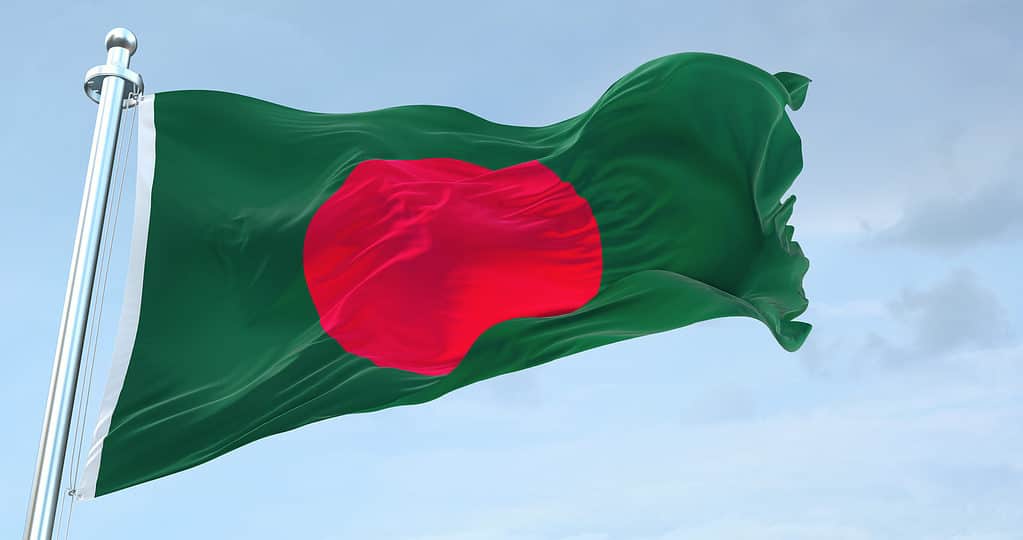
The flag of Bangladesh is green with a red circle in the center.
©iStock.com/EA
Only two flags in the world (the other which will be covered later) make exclusive use of the colors red and green throughout their whole flag design. On January 17, 1972, the flag of Bangladesh was formally recognized as the country’s national flag. The design has a red disc or sun on a dark green banner. For the flag to appear centered when flying, the red disc is shifted slightly toward the hoist.
While the original designer, Shib Narayan Das, offered several explanations for the flag’s meaning, he claimed that the green field of the flag reflects the country’s scenery and the red disc reflects the sun, signifying a new day and an end to oppression.
The Flag of Burkina Faso
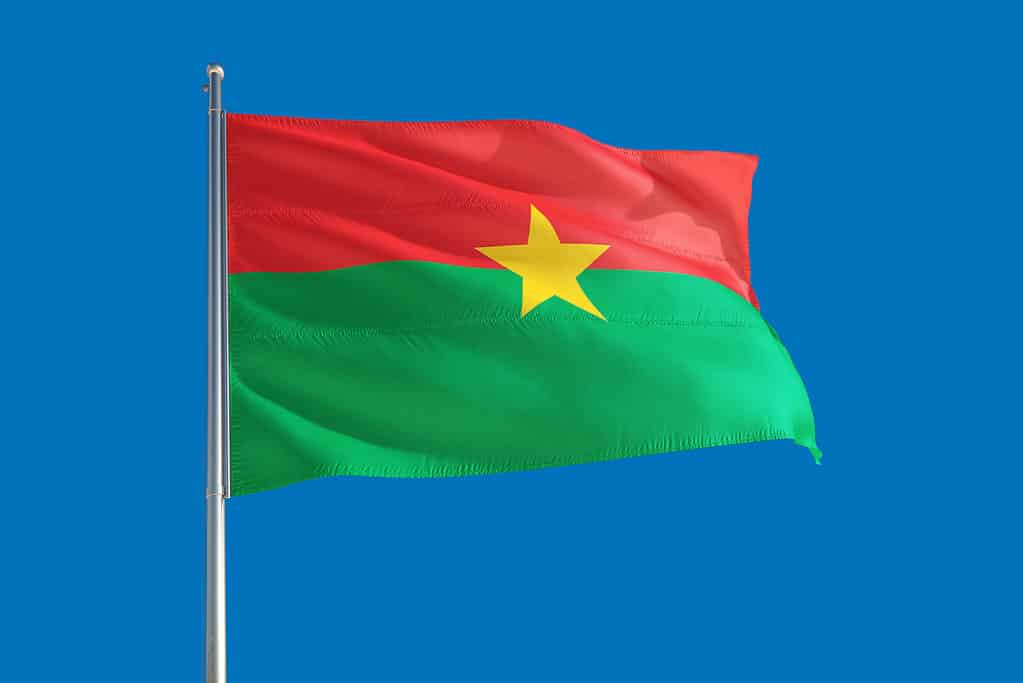
The Burkina Faso national flag is horizontally striped red and green with a central five-pointed yellow star and a 2:3 width-to-length ratio.
©Black Pearl Footage/Shutterstock.com
When Upper Volta changed its name to Burkina Faso on August 4, 1984, the national flag was formally adopted. By adopting the Pan-African colors (red, green, yellow) the flag symbolizes both independence from colonial rule and solidarity with other former African colonies.
Its flag has two horizontal stripes of red and green of equal size, and a small five-pointed star that’s yellow in the center. The color red is considered to represent the revolution, while the color green represents the wealth of the land and its resources. The revolution’s guiding light is symbolized by the yellow star superimposed on the red and green stripes.
The Flag of Maldives
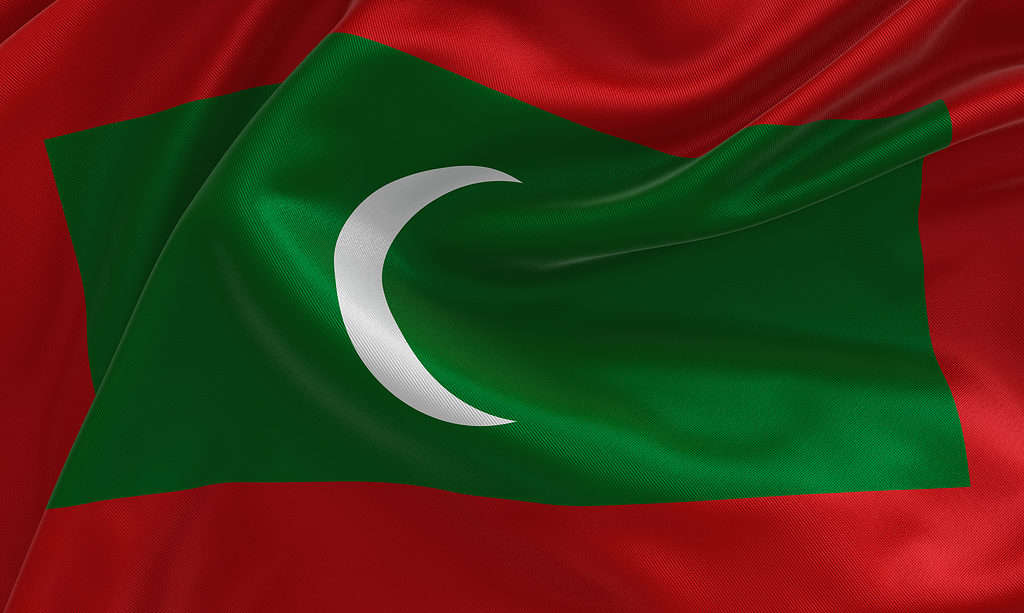
The Maldives flag is red with a green square and white crescent in the green.
©iStock.com/Nabil Kamara
The current design of the Maldives flag dates back to 1965 when the country won its independence from the United Kingdom. In its current form, it has a green center and a crimson rim. In the middle of the flag’s green field is a white crescent, its closed side facing the hoist.
The heroes of the nation have shed their blood for their country, and the red rectangle depicts their desire to give their last drop in defense of the nation. In the middle, the green rectangle represents hope and growth. The state’s and government’s adherence to Islam is represented by the white crescent moon.
The Flag of Morocco
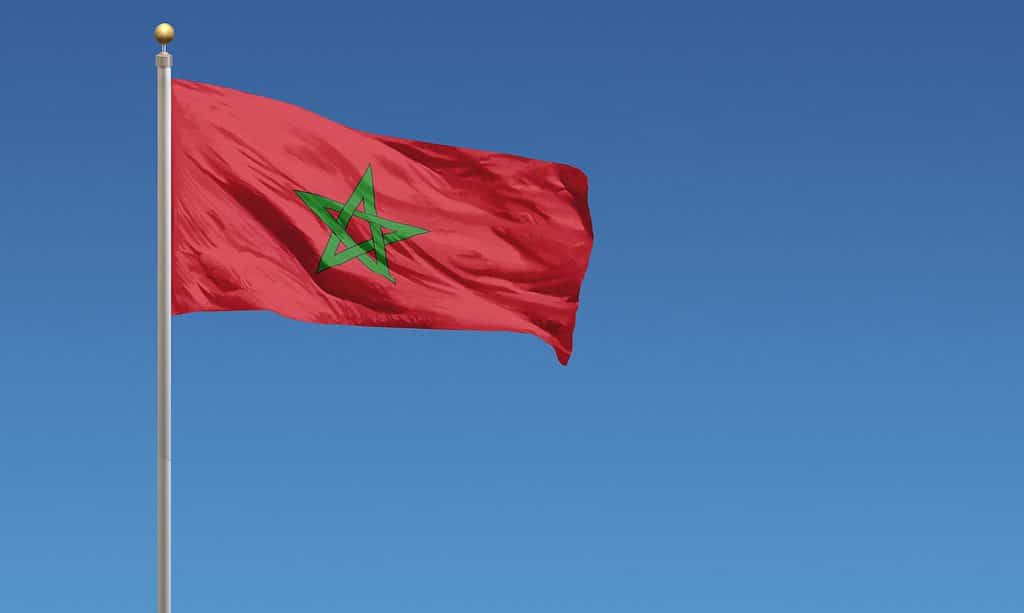
The flag of Morocco is red with a green pentangle in the center.
©iStock.com/Derek Brumby
The flag of Morocco is the only other flag on this list apart from Bangladesh which uses only red and green throughout the entire design. Since 17 November 1915, the current flag of Morocco has represented the country. The current flag features a crimson background with a green pentangle that has been intertwined in the center. Although the red flag with the central seal was still flown on land while Morocco was under Spanish and French control, it was not allowed to be flown at sea. After independence was declared anew in 1955, this flag was once again flown over the country.
The Moroccan flag represents the nation’s willingness to engage with the outside world. In Morocco, the color red represents the royal ‘Alawid dynasty, hence it has deep historical significance. As an Islamic symbol, the pentagram stands for the Seal of Solomon. Each of the five points stands for one of Islam’s five pillars.
The Flag of Portugal
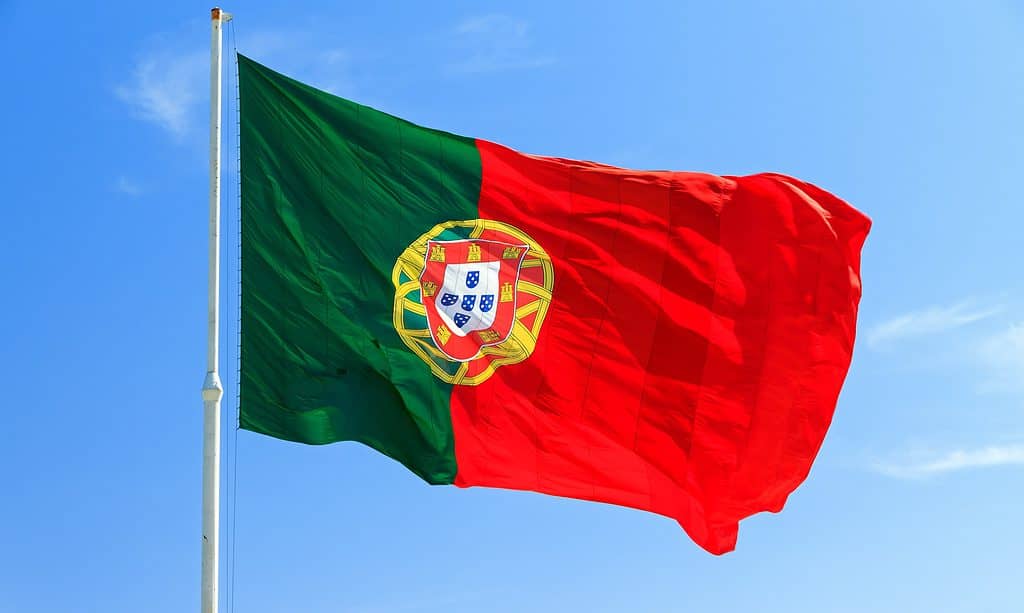
The flag of Portugal is green and red with a coat of arms in the center of the divided colors. The red field is bigger than the green.
©iStock.com/dennisvdw
The Portuguese flag, formally known as the Bandeira de Portugal, represents the Portuguese Republic. It was presented on December 1st, 1910, after the constitutional monarchy had fallen on October 5th of that year. However, the official edict publishing this flag’s acceptance as the national flag did not appear in print until 30 June 1911. Design-wise, it’s a green hoist and a red fly rectangle. The more diminutive form of the Portuguese coat of arms (an armillary sphere and a Portuguese shield) is positioned in the middle of the color boundary, midway from the top and bottom edges.
Blood shed for Portugal’s republican cause is represented by the color red, while the color green represents optimism for the future. During the Age of Exploration and Discovery, sailors employed celestial instruments like the yellow armillary sphere to navigate the waters. This was a time when Portugal was flourishing and looking to the future, known as their “Golden Age.” The central shield has appeared on virtually every iteration of the Portuguese flag. The shield design has several elements, with each component standing for a past Portuguese victory.
Up Next:
- White Flag with Red Cross: England Flag History, Meaning, and Symbolism
- Blue Flag with White X: Scotland Flag History, Meaning, and Symbolism
- Black, Red, and Green Flag: The History and Meaning of the Pan-African Flag
The photo featured at the top of this post is © iStock.com/VanReeel
Thank you for reading! Have some feedback for us? Contact the AZ Animals editorial team.






